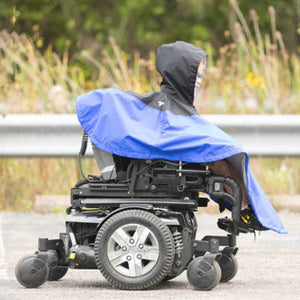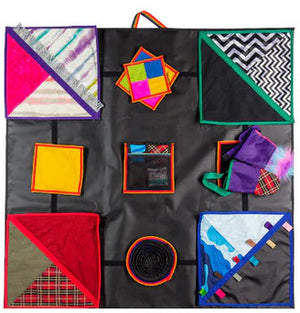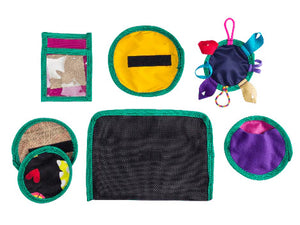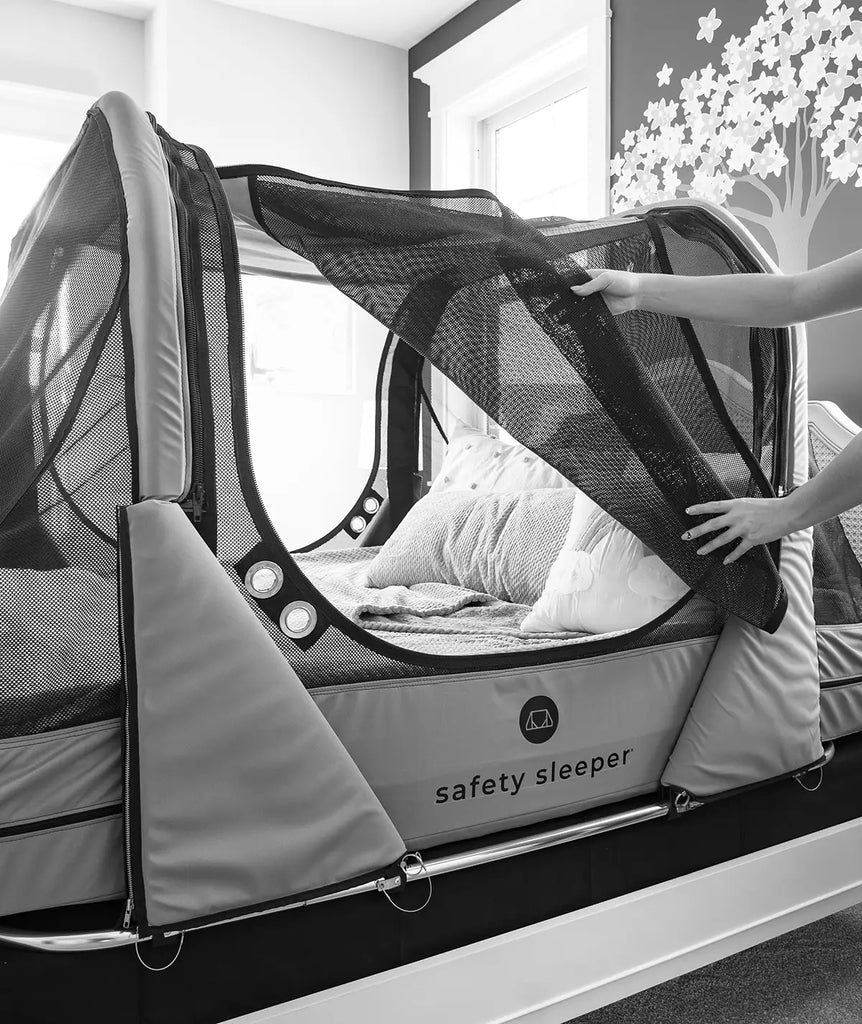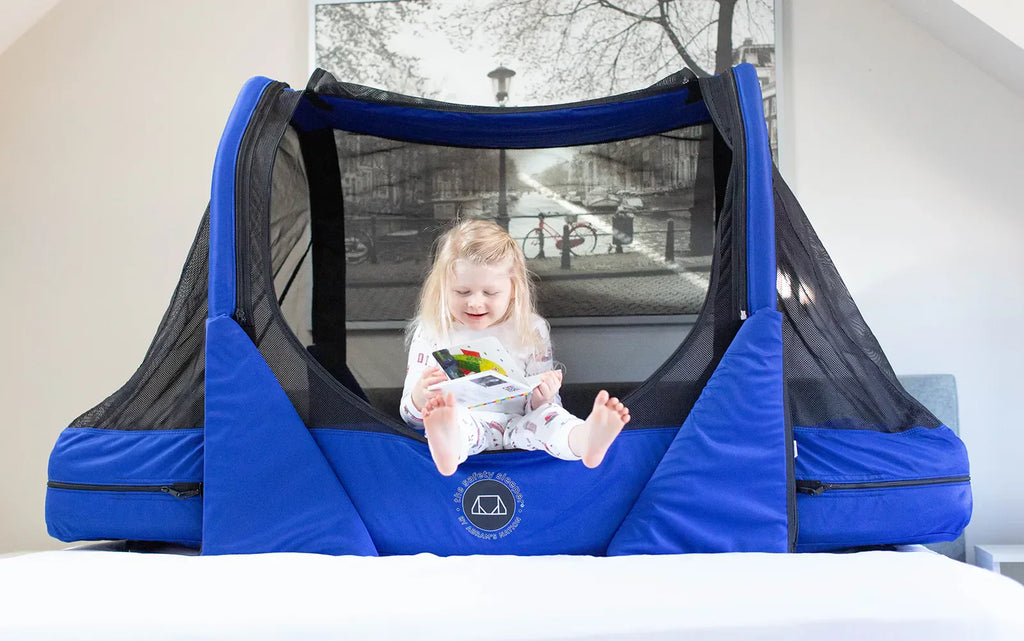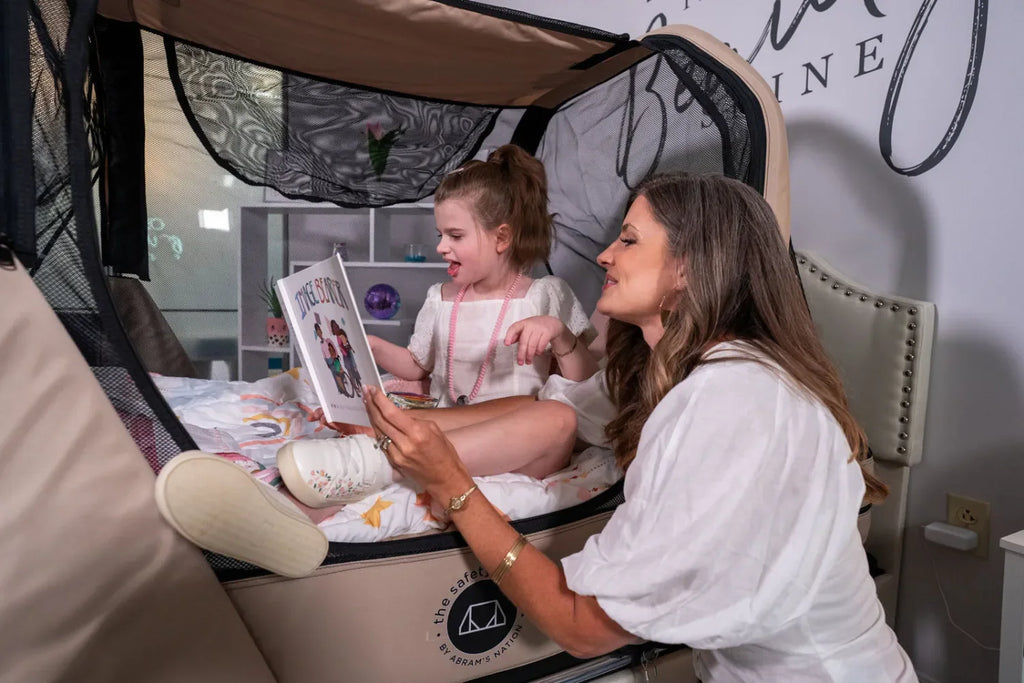You know better than anyone else how important good sleep is for your child. That’s especially true if you have a child with special needs. Helping your toddler with special needs sleep through the night is critical to every facet of life.
The relationship between autism and sleep, for example, is well-documented, and research has shown that sleep problems—including trouble falling asleep, frequently waking, or being unable to fall back asleep early in the morning—are associated with:
- physical aggression
- irritability
- inattention
- hyperactivity
- behavior issues
Bad sleep can exacerbate these symptoms. And if you have a child with special needs, you know just how difficult bedtime can be.
To combat these challenges, work to help your child achieve deep, restorative sleep every night.
Helping Your Child With Special Needs Sleep Better: 11 Strategies
Here are a few strategies you can employ to help your child sleep better:
- Get plenty of physical activity throughout the day. Large amounts of physical activity during the day can help tire your child out ahead of bedtime.
If possible, your child should get about an hour of vigorous exercise per day (like running and jumping up and down).
If your child has physical limitations or is bound to a wheelchair, even simply moving throughout the day can help them physically fatigue.
- Make sure your child gets plenty of sunlight. While you’re focused on increasing physical activity, look to get outside! Natural sunlight supports production of vitamin D, serotonin, melatonin, and your child’s circadian rhythm. In fact, taking your child for an evening walk gives them a chance to soak in the last bit of sunlight before winding down for bed!
- Prevent elopement. Some children with special needs are more likely to wander (or elope) in the middle of the night. For some, that means simply walking around their bedroom. For others, it means wandering through the house (and having access to sharp objects and dangerous appliances in the kitchen and dangerous chemicals under the bathroom sink). For others still, it means stepping outside, which could expose them to traffic, lakes and streams, strangers, and other hazards.
A fully enclosed safety bed can keep a child comfortably in bed without painful restraints, making it a great long-term strategy to prevent elopement.
But we’ve also met with parents who keep out-of-reach locks at the top of doorways, including the child’s bedroom door and especially the doors leading outside—all to keep their children safely in place.
- Create a soothing bedtime environment for your child. The best “soothing” environment could be different from child to child. In general, though, a great environment for a child with special needs includes:
- Blocking out excessive light from under the bedroom door or through the bedroom windows. In some cases, your child may appreciate a soft night light!
- Blocking out excessive noise from the rest of the house or from outside. In some cases, your child may appreciate a gentle white noise machine.
- Providing a comfortable bed, bed sheets, and pillows. Many children with special needs are prone to hyper sensitivity, so scratchy bedsheets and uncomfortable mattresses can become frustrating distractions.
- Avoid food and drinks before bedtime. In helping your child wind down at the end of the day, avoid giving them food and drinks close to bedtime, especially sugary, caffeinated beverages, sweet desserts, or heavy meals.
Sugar and caffeine may energize your child in ways that complicate bedtime. And if your child has any sort of gastrointestinal issues, heavy drinks or food before bed can cause stomach discomfort, which may be distracting for a young child who’s supposed to go to sleep.
- Stick to a bedtime routine. Children with Autism Spectrum Disorder and other special needs often feel comforted by familiarity, especially when it comes to activities in the day. Sticking with a consistent bedtime routine can help them feel safe and calm before bedtime, which may ultimately help them fall asleep faster.
Find a routine that works well for you, your child, and your family. For example, you may choose a progression like:
- Dinner
- Playtime
- Bath
- Brush teeth
- Apply essential oils (more on those later)
- Pajamas
- Reading
- Bedtime
Note: Sticking with this routine as closely as possible is especially important when you’re traveling, as it can help your child feel safe even in unfamiliar surroundings.
- Help your child wind down at the end of the day. Part of a great bedtime routine includes eliminating exciting and stimulating activities well before bedtime so that your child has an opportunity to calm down.
That may include avoiding:
- Time on the phone or tablet
- Video games
- TV and movies
- Social media
Even loud noises or bright lights can be counterproductive near the end of the day.
But you know your child best. Work to eliminate stimulating distractions at the end of the day to help your child sleep!
- Avoid too much sleep during the day. For children with special needs, napping in the middle of the day can be healthy and even important to controlling mood swings and a variety of other factors.
But too much sleep during the day can disrupt sleep later at night.
The appropriate nap length and frequency varies from child to child and may depend partially on their diagnosis. Of course, you may need to experiment with your child to find the best nap length and frequency!
- Try essential oils and herbal sleep aids. Some parents of children with special needs swear by essential oils in helping their kids fall asleep. A few of the most common choices include:
- Lavender Oil. Lavender oil has been shown to have a relaxing effect by lowering both an individual’s heart rate and blood pressure—and it can also assist in reducing anxiety! Lavender oil is often included in lotions or can be breathed in.
- Ylang Ylang Oil. Like lavender oil, ylang ylang oil can lower heart rate and blood pressure. Breathing it in can have a calming effect!
- Chamomile Oil. Like chamomile tea, chamomile oil can have a relaxing effect at the end of an anxiety-inducing day.
- Use melatonin and sleep medication. You could turn to all-natural melatonin supplements, which can help promote healthy sleep, or prescription sleep aids from your doctor, which can be a little more aggressive in helping your child fall asleep.
- Try cognitive behavioral therapy. With cognitive behavioral therapy, you can adopt practical strategies to modify your child’s negative bedtime behavior, like consistently wandering out of bed or crying for attention after going to bed.
In some cases, this could mean quietly picking up and returning your child to bed every time they leave their room during the night, or it could involve helping them try relaxation strategies at bedtime. Or, in other cases, behavioral therapy could include flipping negative thoughts around sleep, like teaching a child who’s afraid of the dark that their bed is a safe place.
- Use a fully enclosed safety bed. A fully enclosed safety bed can provide a wide range of benefits for a child with special needs. For example, a fully enclosed safety bed can:
- Prevent night time elopement. Because a child can’t slip out of a fully enclosed bed the way they might slip through a bedroom door, they can’t expose themselves to dangerous hazards inside or outside of the house. We’ve heard horror stories of parents finding their children with special needs “playing” by putting silverware in the microwave—a potentially deadly activity!
- Produce a safe, calming environment. A fully enclosed safety bed offers an additional sense of security to your child. With multiple see-through mesh walls and the soft padding, a fully enclosed bed can help cut out excessive noise and light, creating a more peaceful sleeping environment.
- Promote sleep. That safe, calming environment then promotes sleep, helping your child fall asleep faster and stay asleep longer! And because it’s intended for sleep (not play), your child can learn to associate their bed with sleep. Parents who use The Safety Sleeper®, with their children say their kids regularly experience better sleep!
More Resources To Help Your Child With Special Needs Sleep Better
The Safety Sleeper®, a fully enclosed safety bed, is specifically designed to help children with special needs sleep better. In fact, our founder started Abram’s Nation after building her first enclosed bed for her son, who has autism spectrum disorder!
Check out The Safety Sleeper® today, or look into our bed accessories or insurance coverage process.








